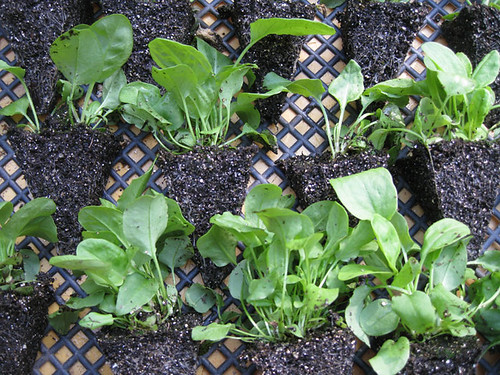 I’ve written about sorrel, Rumex acetosa, before. It’s a perrenial herb that, once established, produces a whole lot of juicy, sour leaves that are great in a salad or soup. They figure prominently in my food forest plans as one of the anchor species in the herbaceous layer. I started a bunch from seed a month or so ago in a speedling tray, and planted them out in the food forest this weekend. I timed the planting to take advantage of the first real rain of the season, which is supposed to arrive in a couple of days.
I’ve written about sorrel, Rumex acetosa, before. It’s a perrenial herb that, once established, produces a whole lot of juicy, sour leaves that are great in a salad or soup. They figure prominently in my food forest plans as one of the anchor species in the herbaceous layer. I started a bunch from seed a month or so ago in a speedling tray, and planted them out in the food forest this weekend. I timed the planting to take advantage of the first real rain of the season, which is supposed to arrive in a couple of days.
Speaking of rain, I also need to get out to the forest tomorrow and scatter the dryland annual clover mix from Peaceful Valley. The mix consists of various clovers, subclovers, and medic, which as legumes will improve the soil by fixing nitrogen, and provide organic matter and also forage for insects.
In other news, I collected some Blue Elder (Sambucus cerulea) berries from the side of the road near the Middle Fork of the American River yesterday. I plan to separate the seeds from the berries, and then plant them in pots, and eventually incorporate them as an understory tree in the food forest. It seems that elderberry seeds require a bit of fussing to get them to germinate – sulfuric acid and cold stratification – which I believe means they are meant (from an evolutionary perspective) to pass through a bird and sit through a winter before germinating.


2 Responses to The Herbaceous Layer – Garden Sorrel